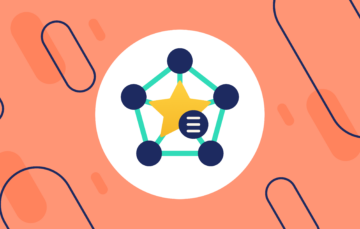
Authenticx’s VP of Product Innovation Michael Armstrong and CEO Amy Brown recently sat down to share their unique perspectives on the value of unstructured data. Here’s what they had to say:
Michael, you have an extensive background in engineering, architecture and BI. You meet up with Amy, a social scientist who sees the promise of human understanding in unstructured data. Can you each share a bit more about your backgrounds and how your previous experiences have shaped the way you view unstructured data?
Michael: I spent years, decades now, working with data in all kinds of different roles. Whether it was forecasting sales, forecasting demand, putting together data warehouses, or dashboards. And one of the themes that came out of that experience is what I thought were really compelling stories. Compelling such that, any given business or business leader would obviously act on it. There were just obvious action items (to me, at least) and what I found was the majority of the time there was no action, there was no follow-up. So even though there was really compelling data, really objective data, it was really hard to get traction in the action item space. That was one of the really core things that’s foundational for me.
So when I heard Amy talking about some of her ideas like montages and the way she really thinks about engaging how you feel about the data or how you feel about a customer’s experience – for me that was a lightbulb moment because of this experience I’ve had where I just couldn’t get traction. And I could see how that could really just drive action items. It would really be truly compelling for other people, who maybe aren’t as data-oriented. So that was a part of my background that was really foundational when Amy started talking about this Authenticx idea.
The other thing – it was so fortuitous because I’d just spent a few years working in an enterprise where we talked about unstructured data all the time. And there were VPs of Customer Experience talking about unstructured data. And what I realized is to a degree unstructured data was like the holy grail in this space. In understanding your customers, it was the holy grail that just couldn’t be found, that just couldn’t be reached. And that was another part of that foundational experience I had leading up to the discussion about Authenticx.
I had this picture in my head of this VP of Customer Experience walking the halls just mumbling under his breath, talking about “unstructured data, unstructured data.” And not knowing what to do about it, but knowing that it’s this incredibly rich source of information that needed to be mined.
“In understanding your customers, [unstructured data] was the holy grail that just couldn’t be found, that just couldn’t be reached.”
– Michael Armstrong
One follow-up question. If you were to diagnose why in your previous corporate experiences action didn’t come from the plethora of unstructured data that was within the organization – why didn’t they act?
Michael: This might be a little bit of speculation here but I think they didn’t act because they didn’t feel it. It was just numbers on a page. It was a visualization. It was a line graph and it looked pretty. And looking at it was more of an administrative check-box than it was something to be acted on. And even if they did look at it and intellectually think “hmm, we should do something about that,” or “we should act on this,” there was another component, which was that information in and of itself didn’t always give you enough depth, enough nuanced insight to understand what you should do or could do to impact those numbers, and at the end of the day, impact your customers.
Amy: So a little bit about my background. Social worker by education and training and spent most of my career in healthcare organizations managing the parts of the enterprise that interfaced every day with our customers, which were often patients. So these were very vulnerable customer interactions and I started to recognize just how moving and impactful those interactions could be. Yet the rest of our enterprise would think about us as this transaction center, the fulfillment center, the cost center of the organization. And I just became more and more aware of how short-sighted that was. What a waste this data source was in that it was amassed in very large quantities in healthcare organizations – stored, but essentially ignored by the rest of the enterprise – and really discounted as a data source that didn’t contain value. So that problem is what inspired the idea around Authenticx. But keep in mind, before I met Michael Armstrong, I didn’t even know what unstructured data was, nor did I think about these human conversations as unstructured data.
When I started Authenticx, I set out first to figure out how to use human beings alone to try to crack the nut and to hire other people like myself – social scientists, social workers, folks who had high-empathy careers – who could really listen effectively and pull out the true nuance that exists within these really complex human conversations. But after a few months of getting traction, I could see that there are some really huge opportunities to leverage technology to really allow listening at scale. But I had no idea how to go about doing that. And so when I met Michael, it just felt like we aligned at the vision level and we aligned at what problem we wanted to solve. And then our respective skill sets were so complimentary it’s just been a fantastic partnership since then.
Michael: You know that’s really interesting what you just said, Amy, about the unstructured data because I remember the first time you described it to me, what I thought was, “Oh, you’re taking unstructured data and you’re structuring it.” You’re finding the patterns, you’re finding the structure and you’re doing that in a disciplined and guided way, where you’re hiring people with a lot of insight to begin with, but you’re also saying, “Hey, here’s the best practice. Here’s the way to approach it to really convert this into structured data that we can do a lot with.”
Amy: That’s in part what we are doing, we’re turning unstructured data into structured data. But you’re right, we’re trying to strike that really important balance between consumable visualized data that helps provide quantified characteristics of a dataset without sacrificing humanity. Because we all go to work in corporate America with a goal to do something, to help someone – that’s why we got into whatever business we’re getting into. And when we only go in a heavily structured direction without providing context around it, without providing a voice around, without providing emotion around it, we cut ourselves off as leaders from the very essence of why we got into the business in the first place. And so it’s that blend of consumable structured data that appeals to the intellectual part of the brain combined with the emotional unstructured component that really connects to the heart. And it’s the combination of those two things together that really provides the information needed to take action for leaders and to inspire action.


